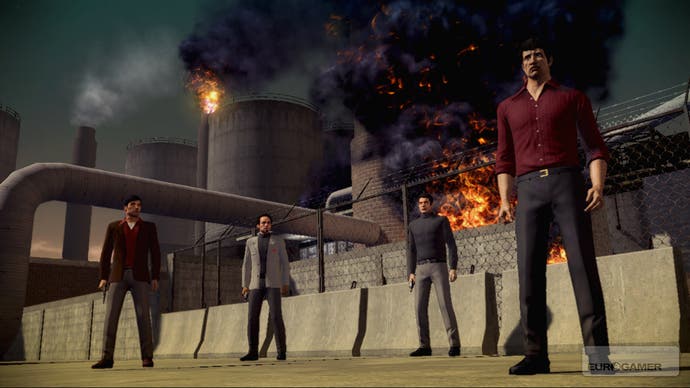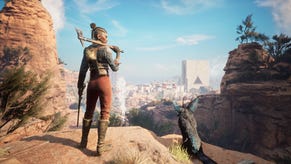The Godfather II
Fun for all the family.
Mafia dons are a funny bunch, spending their days in armchairs listening to other people's frantic begging. As jobs go, it's a bit like being Father Christmas, really, but a Father Christmas with fewer qualms about kneecapping. What mafia dons tend not to do is take orders. They don't get sent out on underwhelming missions, ducking bullets and hassling local tea boys. They have minions who do that for them.
That was the central problem with EA's first Godfather game: its focus on working your way through the ranks meant you had to be a minion rather than the man in charge, and while it was a perfectly acceptable open-world crime game, deep down, it failed to capture the lavish and oppressive atmosphere of the film (even with a handful of the original cast on hand).
Promisingly, then, this is the key issue the developers hope to address with the sequel (although we hope they also have the time to take a look at the mundane missions and uninspiring locations). With a little help from EA's staggeringly intensive post-release analysis system, which presumably involves retinal scans, gently invasive diagnostic procedures, and an orbiting spy satellite, the Godfather team has been hard at work making sure that, this time, you feel like the big cheese.
Their solution is Don's View - sadly not a new digital channel filled with wall-to-wall Nash Bridges re-runs, but a high-level perspective on your entire empire which allows you to strategise, build up your resources, fight other families, and eventually take over the whole show. This essentially adds a layer of streamlined RTS to your gunning and driving, with one button press swooshing you out of your third-person mission perspective and into a top-down view of your entire city, with a three-dimensional map and a series of bright lollipop-colour markers showing where you've allocated your made men, what the other families are up to, and a smattering of available objectives.

The hope is that this will give you a greater sense of actually running a crime empire. Overall, it's a little bit like the strategy element from Godfather: Mob Wars on PSP, in which players had to take over the map, moving men about and fighting over contested areas with other families. But this time, it's not turn-based, or presented as a separate mode - instead, it's a way of tying all the various action elements together into some greater objective.
Unsurprisingly, the team says they've had a lot of tips from Maxis, the people behind The Sims. This doesn't mean that you'll be bricking up your mobsters inside swimming pools, buying them cowboy hats or feeding them until they become shut-ins (save something for the expensive DLC), but it does give you a clue to how far the team are taking the strategy gameplay in terms of micro-management and multi-tasking.

As in any good simulation, the other families will continue to follow their own agendas while you're going about your business, but a quick flip to Don's View will allow you to see what they're up to, and battle them on several fronts at the same time, dragging made men to where they're needed the most, or even playing Favour cards, gained by completing missions, which give you specific perks you can utilise when you fancy. Complete a task for a crooked DA, for example, and he may give you a Sting card, which allows you to take one of your enemy's made men out of circulation for a brief period.
At the moment, it's hard to judge how successful a balance the developers are striking between the uneasy bedfellows of resource management and traditional third-person shooting and driving. Thirty minutes of watching a designer play through a few missions for us, however, means we can at least get an insight into how the more traditional gameplay is holding up.








.png?width=291&height=164&fit=crop&quality=80&format=jpg&auto=webp)


